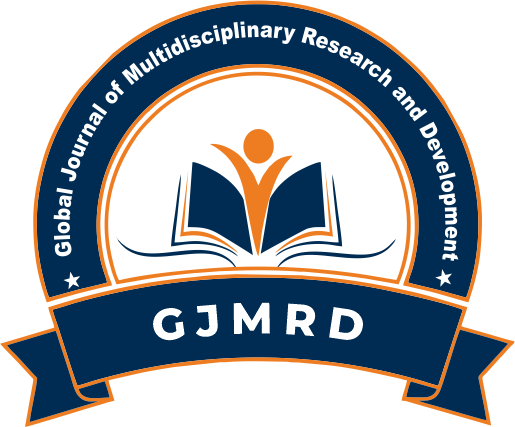Evaluating the Causal Inference Capabilities of Artificial Intelligence Algorithms in Observational Health Data for Real-World Treatment Effect Estimation
Keywords:
Causal inference, Observational data, Artificial Intelligence, Treatment effect estimation, Machine learning, Real-world evidence, Counterfactual modelling.Abstract
Causal inference in observational healthcare data is a fundamental yet challenging task due to confounding and selection bias. Recently, artificial intelligence (AI) methods have shown potential in estimating treatment effects under real-world conditions. This paper explores the capabilities of various AI algorithms—particularly machine learning and deep learning models—to accurately infer causal relationships from non-randomized healthcare datasets. Through a systematic evaluation of representative models and recent advancements, we examine the strengths and limitations of current approaches in estimating individualized and average treatment effects (ITE and ATE). We also compare AI-based estimators with traditional econometric and statistical techniques to highlight methodological trade-offs.
References
Shalit, Uri, Fredrik D. Johansson, and David Sontag. “Estimating Individual Treatment Effect: Generalization Bounds and Algorithms.” Proceedings of the 34th International Conference on Machine Learning (ICML), 2017.
Gonepally, S., Amuda, K. K., Kumbum, P. K., Adari, V. K., & Chunduru, V. K. (2022). Teaching software engineering by means of computer game development: Challenges and opportunities using the PROMETHEE method. SOJ Materials Science & Engineering, 9(1), 1–9.
Johansson, Fredrik, Uri Shalit, and David Sontag. “Learning Representations for Counterfactual Inference.” Proceedings of the 33rd International Conference on Machine Learning (ICML), 2016.
Gonepally, S., Amuda, K. K., Kumbum, P. K., Adari, V. K., & Chunduru, V. K. (2023). Addressing supply chain administration challenges in the construction industry: A TOPSIS-based evaluation approach. Data Analytics and Artificial Intelligence, 3(1), 152–164.
Hill, Jennifer L. “Bayesian Nonparametric Modeling for Causal Inference.” Journal of Computational and Graphical Statistics, vol. 20, no. 1, 2011, pp. 217–240.
Wager, Stefan, and Susan Athey. “Estimation and Inference of Heterogeneous Treatment Effects Using Random Forests.” Journal of the American Statistical Association, vol. 113, no. 523, 2018, pp. 1228–1242.
Louizos, Christos, Uri Shalit, Joris M. Mooij, David Sontag, Richard Zemel, and Max Welling. “Causal Effect Inference with Deep Latent-Variable Models.” Advances in Neural Information Processing Systems (NeurIPS), 2017.
Yoon, Jinsung, James Jordon, and Mihaela van der Schaar. “GANITE: Estimation of Individualized Treatment Effects Using Generative Adversarial Nets.” International Conference on Learning Representations (ICLR), 2018.
Zhao, Qu, Jenna Wiens, and Anima Anandkumar. “Causal Transfer Learning for Heterogeneous Treatment Effects.” Proceedings of the AAAI Conference on Artificial Intelligence, 2022.
Pearl, Judea. Causality: Models, Reasoning and Inference. 2nd ed., Cambridge UP, 2009.
Kumbum, P. K., Adari, V. K., Chunduru, V. K., Gonepally, S., & Amuda, K. K. (2023). Navigating digital privacy and security effects on student financial behavior, academic performance, and well-being. Data Analytics and Artificial Intelligence, 3(2), 235–246.
Imbens, Guido W., and Donald B. Rubin. Causal Inference in Statistics, Social, and Biomedical Sciences. Cambridge UP, 2015.
Athey, Susan, and Guido W. Imbens. “Recursive Partitioning for Heterogeneous Causal Effects.” Proceedings of the National Academy of Sciences, vol. 113, no. 27, 2016, pp. 7353–7360.
Adari, V. K., Chunduru, V. K., Gonepally, S., Amuda, K. K., & Kumbum, P. K. (2023). Ethical analysis and decision-making framework for marketing communications: A weighted product model approach. Data Analytics and Artificial Intelligence, 3(5), 44–53. https://doi.org/10.46632/daai/3/5/7
Kennedy, Edward H. “Optimal Doubly Robust Estimation of Heterogeneous Causal Effects.” arXiv preprint, arXiv:2004.14497, 2020.
Künzel, Sören R., Jasjeet S. Sekhon, Peter J. Bickel, and Bin Yu. “Metalearners for Estimating Heterogeneous Treatment Effects Using Machine Learning.” Proceedings of the National Academy of Sciences, vol. 116, no. 10, 2019, pp. 4156–4165.
Alaa, Ahmed M., and Mihaela van der Schaar. “Bayesian Inference of Individualized Treatment Effects Using Multi-task Gaussian Processes.” Advances in Neural Information Processing Systems (NeurIPS), 2017.
Schulam, Peter, and Suchi Saria. “Reliable Decision Support Using Counterfactual Models.” Advances in Neural Information Processing Systems (NeurIPS), 2017.
Nie, Xinkun, and Stefan Wager. “Quasi-Oracle Estimation of Heterogeneous Treatment Effects.” Biometrika, vol. 108, no. 2, 2021, pp. 299–319.
Harshaw, Christopher, Léon Bottou, and Moritz Hardt. “Balancing Covariate Shift and Predictive Performance in Treatment Effect Estimation.” Proceedings of the 38th International Conference on Machine Learning (ICML), 2021.
Wang, Yixin, and David M. Blei. “The Blessings of Multiple Causes.” Journal of the American Statistical Association, vol. 114, no. 528, 2019, pp. 1574–1596.


